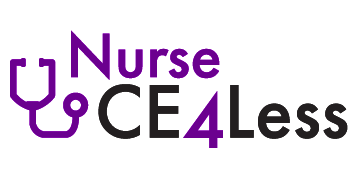Course Summary
Anaphylaxis is a potentially fatal systemic hypersensitivity reaction that is caused primarily by exposure to drugs, foods, and insect venoms. Anaphylaxis can cause hypotensive shock and airway obstruction, the signs and symptoms typically begin within minutes, and clinicians must be prepared to recognize anaphylaxis, administer life-saving medications, and have the expertise to do emergency intubation. Also, health team members have a key role in the education of at-risk individuals and their families and of the general public to increase community awareness of the risk factors, recognition, and treatment of anaphylaxis and of ways to prevent its occurrence. Finally, in the case of exposure to products considered potentially allergenic in a healthcare center, such as latex and radiographic contrast products, having an evidence-based policy for the health team to follow and a screening tool in place to identify at-risk individuals could make the difference between a life-saving intervention and a catastrophic outcome.
Course Format
Homestudy
Course Syllabus
- Introduction
- Epidemiology of Anaphylaxis
- Pathophysiology
- Antigen Exposure
- Antibody Formation and Sensitization
- Re-exposure and Anaphylaxis
- Causes of Anaphylaxis
- Signs and Symptoms of Anaphylaxis
- Differential Diagnosis of Anaphylaxis
- Treatment: Medication and Emergency Interventions
- Epinephrine
- Hypotension and Airway Management
- Second-Line Treatments for Anaphylaxis
- Refractory Anaphylaxis
- Refractory Anaphylaxis, Beta-Blockers, and Glucagon
- Refractory anaphylaxis and Methylene Blue
- Observation
- Latex Allergy
- Radiographic Contrast Media Allergy
- Role of the Interdisciplinary Health Team
- Case Study: Latex Allergy in a Surgical Case
- Summary
Author
Dana Bartlett, RN, BSN, MSN, MA, CSPI
Dana Bartlett is a professional nurse and author. His clinical experience includes 16 years of ICU and ER experience and over 27 years as a poison control center information specialist. Dana has published numerous CE and journal articles, written NCLEX material, textbook chapters, and more than 100 online CE articles, and done editing and reviewing for publishers such as Elsevier, Lippincott, and Thieme. He has written widely on the subject of toxicology and was a contributing editor, toxicology section, for Critical Care Nurse journal. He is currently employed at the Connecticut Poison Control Center. He lives in Wappingers Falls, NY.

